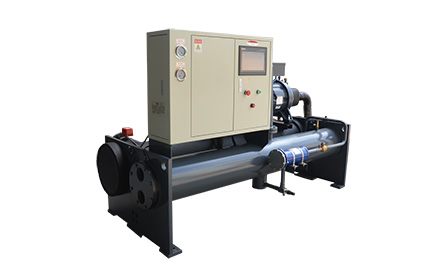Cleaning method of industrial chiller condenser
发布时间:2020-10-09 10:00:00 浏览:10次 责任编辑:Guangdong Jecicool Refrigeration Machinery Co.,Ltd
The condenser is one of the main components of the industrial chiller. In the cooling process, the condenser plays a role in outputting the heat absorbed in the evaporator and the heat converted by the compressor work, and transfers the heat to the cooling medium to take away and make the cooling The condensing agent is a heat exchange device. If its performance decreases, it will directly affect the cooling capacity of the chiller.
Commonly used condensers in industrial water chillers include air-cooled condensers, water-cooled condensers and evaporative condensers. Among them, water-cooled condensers include horizontal shell and tube type, sleeve type and welded plate. Here We mainly introduce the cleaning of two commonly used chiller condensers, the copper tube fin air-cooled condenser and the shell and tube water-cooled condenser.
Condenser cleaning time and cycle
Usually the chiller system will have an alarm device. The condenser will have poor heat dissipation due to dirt and blockage, and the condensing pressure will rise. When the high pressure limit is exceeded, the system will trigger an alarm.
Cleaning of air-cooled finned condenser
The air-cooled condenser uses air as the cooling medium. Due to the dust in the air, part of the dust will stick to the surface of the condenser fins. A long time will make the heat dissipation effect of the condenser worse, especially in a harsh environment. Place, so it should be cleaned regularly. Simple dust can be blown clean with compressor air, etc. If there is a lot of dirt, a non-corrosive cleaning agent should be used to clean the heat pipe and fins to achieve the purpose of enhancing the heat dissipation effect.
Cleaning of water-cooled shell and tube condenser
The cooling water of the water-cooled condenser usually adopts an open circulation loop. When the content of calcium salt and magnesium salt in the water is large, it is easy to deposit on the surface of the cooling water pipe to form scale and affect heat transfer. Excessive scaling will also reduce the flow cross-section of the cooling water, reduce the water volume, and cause the condensation pressure to rise. Therefore, it is necessary to clean the scale regularly according to the water quality. The poor water quality (such as groundwater, lake water, etc.) is cleaned at least once a year; the water quality is good, It can be cleaned once every 2~3 years.
Manual cleaning
Use a flat shovel and a small hammer to hit along the outer surface of the pipe to clean up the scale outside the pipe. This method is suitable for shower type cold extractors. If the freezer is a shell-and-tube condenser, the scale in the tube can be drawn and brushed with a spider-shaped key wire. The method of manual descaling is simple, but the descaling effect is not good, the efficiency is low and the labor intensity is high.
Mechanical cleaning
-Close the water inlet and outlet valves of the condenser of the unit, and drain the cooling water in the condenser.
-Remove the end cap of the condenser and clean the scale.
-Choose a suitable cleaning brush and clean it with a washing machine.
-After cleaning, open the water valve on one side to flush the copper pipe.
-Replace the condenser end cover and check the tightness.
-Open the condenser inlet and outlet water valves to make up water and check for leaks.
-When the conditions are ripe, start the test machine.
Chemical cleaning
For example, the method of adding a dilute acid to a corrosion inhibitor may have a corrosive effect on the copper pipe wall, so it is recommended to find a technician to operate it. Generally, it is only considered when the copper pipe is too thick to be peeled after hardening.
Other cleaning methods
There are also automatic online cleaning of rubber balls, high-pressure cleaning, ultrasonic cleaning, electric double-layer benefit cleaning of negative electron aqueous solution, etc., which will not be repeated here.











 Jo Liu
Jo Liu
 +86 13924630342
+86 13924630342